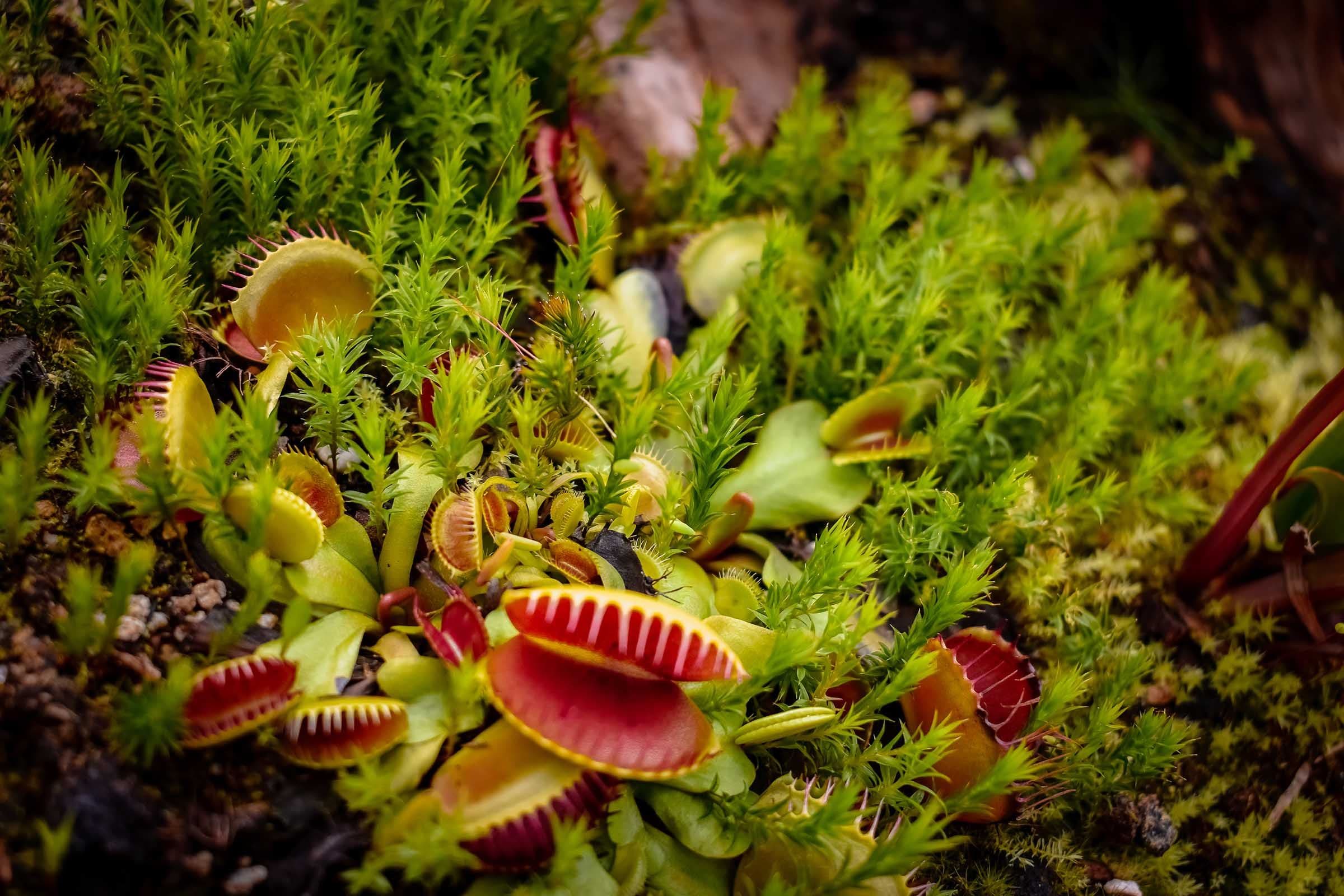10 Myths About Venus Flytraps You Probably Still Believe

Published on 24.04.2025
Myth #1: “These little monsters will bite your finger off.”
Picture this: you nudge a trap, waiting for Hollywood‑level carnage…and nothing happens. That’s because a Venus flytrap is wired with a security code: it must feel at least two hairs touched in quick succession—think “double‑tap to unlock.” Even when it finally closes, the force is barely strong enough to hold a gnat. Your fingertips are as safe as a marshmallow at a salad bar. The only real danger? Losing track of time because you’re mesmerised.
Myth #2: “Just toss in some hamburger.”
I’ve seen more traps murdered by meat than by anything else. A burger patty is pure grease and protein—great for a grill, terrible for a plant that evolved to digest crunchy exoskeletons. Inside the trap, beef turns into a slimy mess that smells like old gym socks and invites bacteria to the party. End result: blackened, mushy trap and one sad grower. Spare your plant (and your nose); stick to small insects—or no food at all.
Myth #3: “If it doesn’t eat bugs, it dies.”
Sunlight is the main course; bugs are dessert. I’ve overwintered flytraps that didn’t catch a single insect for months, and they bounced back just fine. Six to eight hours of direct sun is the real secret sauce. Think of bugs as sprinkles on ice cream—nice, but not essential for survival.
Myth #4: “Any potting soil will do.”
Standard potting soil is like serving salty fries to a goldfish—instant disaster. Flytraps come from nutrient‑poor bogs, so their roots are hypersensitive to minerals. They thrive in a 50/50 mix of pure sphagnum peat and coarse perlite (or long‑fiber sphagnum straight up). No fertiliser, no compost, no blue pellets. If the bag says “feeds up to six months,” run.
Myth #5: “Tap water? Sure, plants love water.”
Here’s a fun experiment: measure your tap water’s TDS (total dissolved solids). It usually clocks in at 350 ppm—way over the 100‑ppm threshold that flytraps can handle. Over time, salts accumulate in the soil, roots shrivel, leaves blacken, and it’s game over. Collect rainwater in a clean barrel, buy distilled, or install a reverse‑osmosis filter. Your plant will thank you.
Myth #6: “Keep them steamy—think tropical jungle.”
Venus flytraps are from the coastal plains of North Carolina where summer is humid but winter can flirt with frost. They need a 3‑ to 4‑month dormancy at 0–10 °C. Skip their winter nap and they’ll sulk, then crash. Solution: unheated greenhouse November to February. Some growers pop them in the fridge in a zip‑lock bag of damp moss. Weird? Yes. Effective? Absolutely.
Myth #7: “Black leaves mean the plant is dead.”
If I had an euro for every panic DM about black leaves, I could buy another greenhouse. In late autumn, growth slows, traps darken, and the plant looks like it lost a bar fight. Under the soil, the rhizome stays firm and white—a heartbeat waiting for spring. Gently tug a leaf—if it slips out clean and the base is white, you’re golden.
Myth #8: “The bigger the pot, the bigger the trap.”
Deep pots help buffer moisture swings, but trap size is a sun game. My 7‑cm pots basking in full sun throw 4‑cm traps, while shaded giants in 15‑cm tubs stay tiny. Want megatraps? Give them south‑facing sun or a grow light that could land a plane.
Myth #9: “Exercise the traps—make them snap!”
Imagine you had to run a 5‑km sprint every time someone poked your shoulder. Each closure burns the plant’s hard‑earned sugars, and a trap only has about three to five good snaps in its lifespan. Touch only when necessary (feeding or pruning). Otherwise, treat them like art: look, don’t poke.
Myth #10: “They’re short-lived novelty plants.”
The first flytrap I ever bought—named ‘Houdini’ because it escaped every pot—just turned eleven. Well‑cared‑for clones can last decades, dividing into clumps that could outlive their original grower. Think bonsai, not bouquet.
The Four Golden Rules (tattoo these on your watering can)
Pure Water – rain, RO, or distilled.
Poor Soil – sphagnum peat + perlite, zero fertiliser.
Plenty of Sun – 6–8 hours direct or strong grow lights.
Proper Winter Rest – cool dormancy, 0–10 °C for 3–4 months.
Master those and you’ll move from myth victim to flytrap whisperer.
Final Snap
Growing Venus flytraps isn’t witchcraft. It’s respect for where they come from: bright, wet, nutrient‑poor bogs that freeze in winter and roast in summer. Follow nature’s script, and your plant will reward you with dramatic traps and endless “Whoa, is that real?” comments from friends.
Got questions? Slide into my DMs on Instagram @peterflytraps or drop a comment below. And if you hear a new myth, let me know—I collect them like trading cards.
Stay snappy 🌱
— Peter